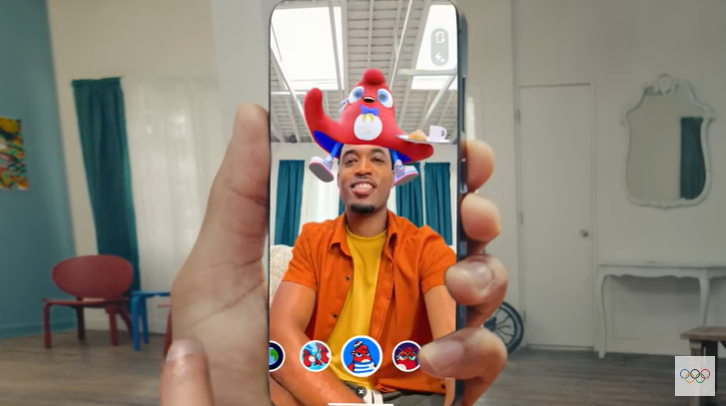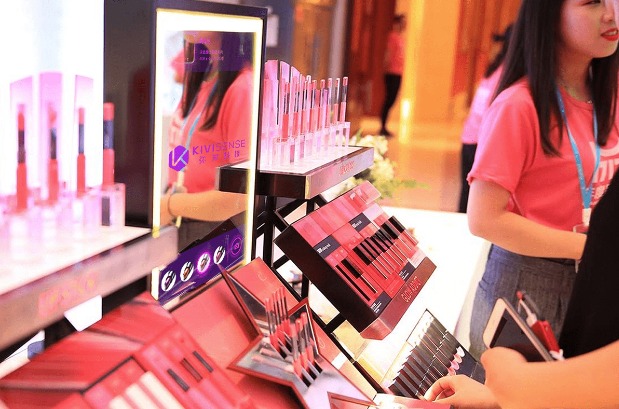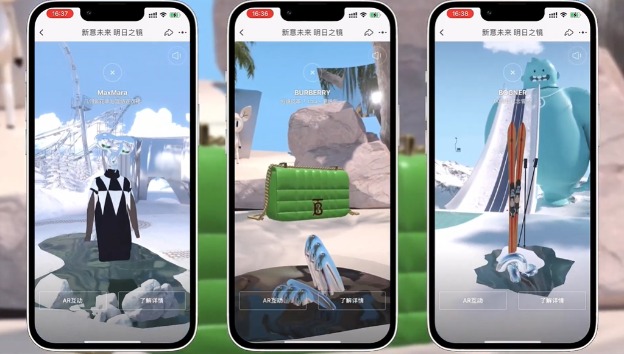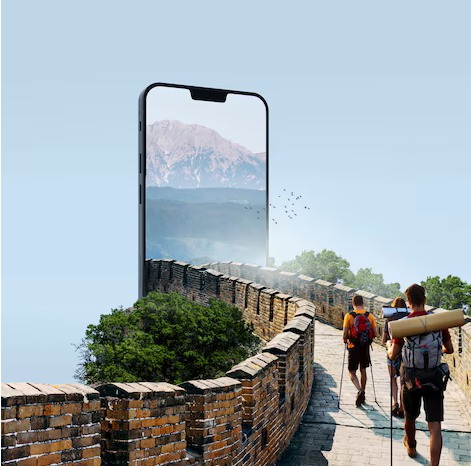Augmented reality superimposes digital elements on real-world scenarios to enhance human interaction with technology through smartphones, AR interfaces, or glasses. Be it Gen-Z or Millennials, both generations love sports and want to engage with their favorite games and sports in more personalized and interactive ways. This has led to a surge in popularity of AR integration in the sports sector.
World’s major sports clubs, federations, and broadcasters are creating innovative AR applications to boost in-game excitement for viewers, whether at home or attending live events. According to a sports media report, integration of AR in broadcasts has increased viewer engagement by 15% and improved viewer retention by 20% during major sporting events.
Importance and evolution of AR in sports sector
AR integration in sports started as simple overlays in broadcasts, but with time, it has evolved into a technological marvel. Nowadays, sophisticated AR applications enhance fan interaction and engagement through interactive content and real-time information overlays. Athletes can also use AR to improve their sports training and skills through immersive visualizations.
AR not only benefits fans and athletes, but it also opens innovative marketing and sponsorship opportunities for advertisers. Brands can advertise their offerings in sports events through interactive marketing campaigns. This helps advertisers reach more audiences and generate more revenue for teams and organizations.
Transformative applications of augmented reality in sports
AR in physical and e-sports
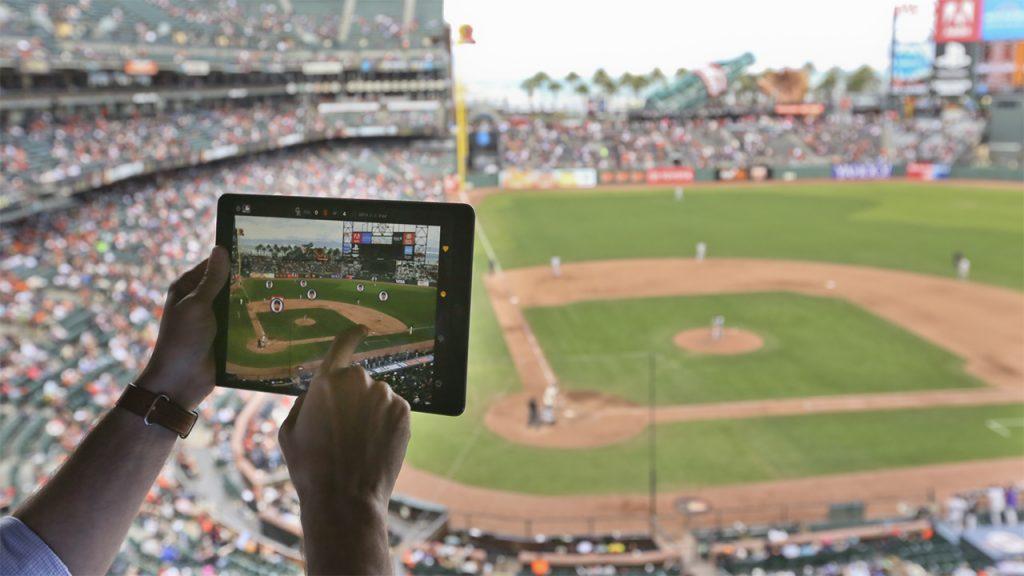
Source: arpost
AR is truly a game-changer in both physical and e-sports. In popular sports like football, basketball, tennis, and soccer, this innovative technology is being used to breathe a new life into fan interaction and viewing experience. Fans are surrounded by an electric atmosphere where they can see virtual team lineups, player profiles, and strategic overlays during broadcasts.
Moreover, the use of optical tracking technologies like Hawk-Eye improves officiating accuracy by providing clear visualizations of gameplay. For eSports, AR takes immersion to another level. AR-powered smartphones and glasses take the audience to a virtual arena overlaid onto their surrounding area. By displaying live match data, 3D maps, and player stats in real time, it makes viewers feel like they are part of the action.
AR live sporting events
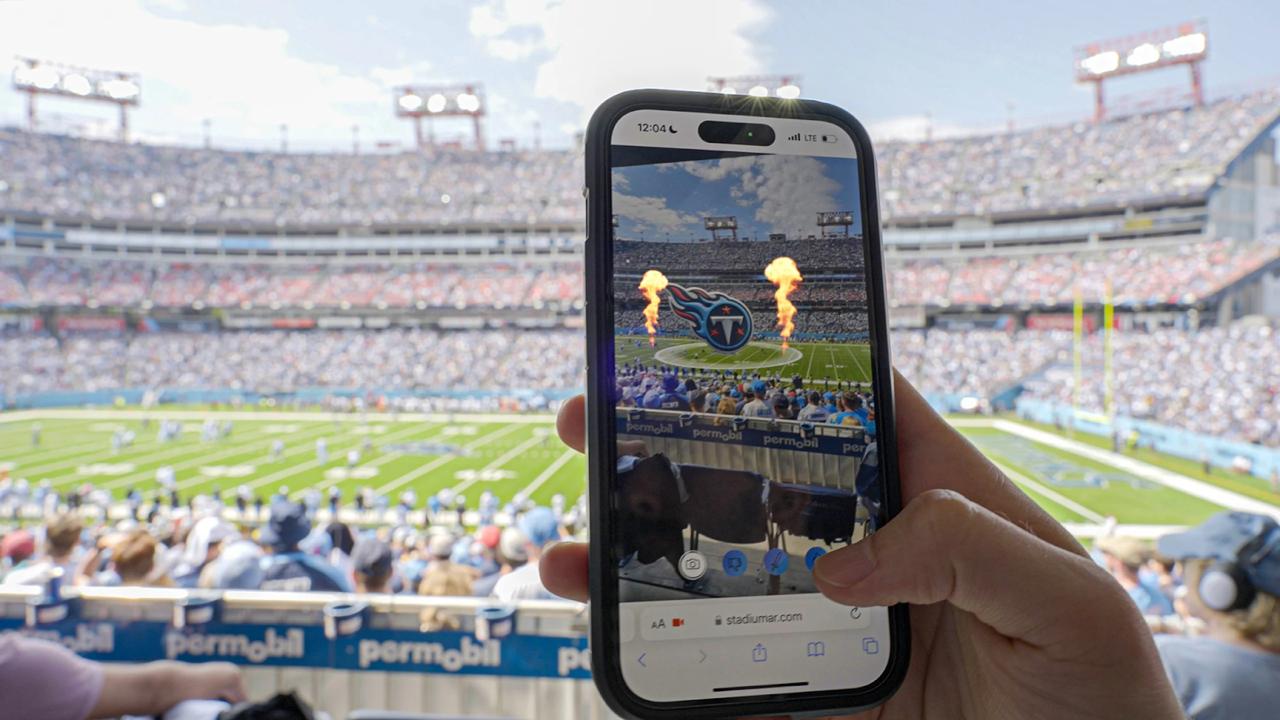
Source: livedesign
In live sporting events, AR captivates audiences by creating thrilling and immersive experiences. It helps fans in the stadium to interact with AR elements, such as virtual replays and 3D player profiles, which provide insights into gameplay. Teams can also create interactive AR experiences that allow viewers to participate in games or enjoy virtual meet and greet.
Moreover, social media integration enhances live sporting events with AR filters and effects. When fans share these exciting experiences with others, it takes the game promotion and event beyond the stadium walls.
AR-enhanced stadium navigation
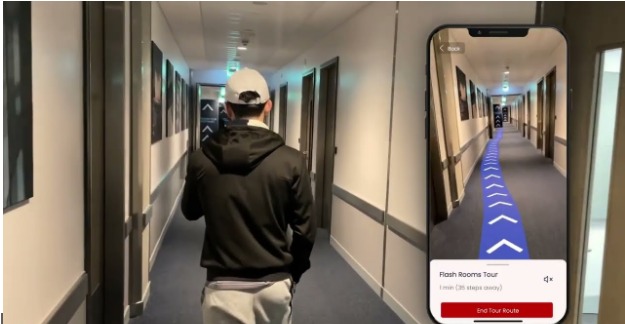
Source: ARway/Youtube
AR-enhanced stadium navigation helps fans explore the stadium virtually before buying tickets. AR creates 3D models of a stadium where they can explore different sections of the stadium without physically going there. Once they reach the stadium, AR can overlay navigational paths in the real world to guide fans to their seats, restrooms, concession stands, and other points of interest.
This improved navigation reduces congestion, enhances the flow of foot traffic, and streamlines overall stadium operations. A recent study shows that AR enhancements in sports stadiums can lead to increased fan attendance and improved event experiences.
Real time analysis of athlete performance
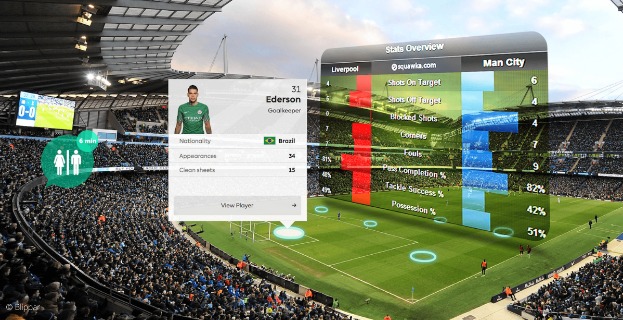
Source: riplee
AR provides real-time analysis of athlete performance using AI algorithms. AR can give players and coaches instant visual feedback on their technique by analyzing their movements and overlaying performance metrics, biomechanics, and other technical details onto live training sessions.
Players can also monitor their movements in real time using AR headsets or AR glasses. This gives them a detailed analysis of angles, distances, and speed so they can make necessary adjustments in their techniques accordingly. This also minimizes the risk of any injury during practice or game sessions.
Sports betting
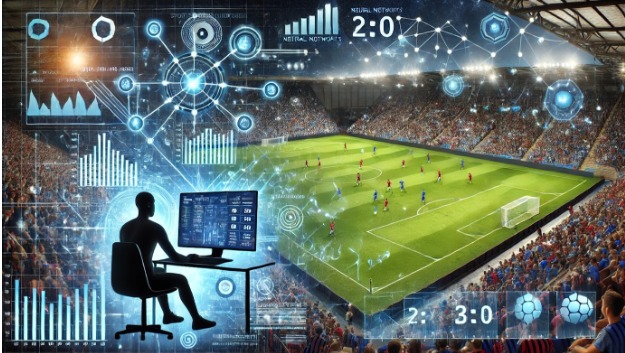
Source: ainews
Betting industry is also using AR to make sports betting more accurate by providing real-time data visualization. With AR, bettors do not need to spend hours searching and analyzing game data to place a bet. They can use AR to overlay player statistics, such as speed, distance, and trajectory, on the live video by simply pointing the AR device on screen. This will help them better understand game dynamics and make more informed bets.
Moreover, bettors can now place bets through an AR app without leaving the game. In this way, they can also interact with other bettors who are betting on the same game or event leading to head-to-head wagers and making it easier to bet than traditional ways.
Sports training
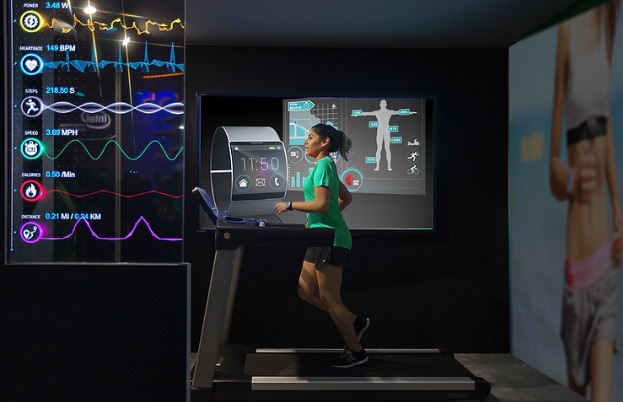
Source: einfochips
Players can also use AR for sports training by simulating different playing situations and scenarios. Through real-time video feedback and overlays, players can refine their techniques and improve their skills. AR also provides real time analysis of performance metrics by assessing player’s movements during training sessions.
Moreover, smart clothing with sensors can help improve things like yoga poses or golf swings, with data available on your phone or smart glasses. These devices can show real-time training information, such as heart rate, and help you mimic the swing of your favorite golfer.
Benefits of AR integration in sports
Improved fan interaction and engagement
When there are people enjoying sports, marketing, sponsorship, and advertising are sure to follow. And what better than AR to turn traditional boring marketing content into highly engaging and dynamic one? Simple posters or brochures can become interactive and exciting through AR applications.
Users can scan advertising posters or objects to get more information or even special deals through interactive games. Moreover, AR-powered on-field advertising can display different ads on various feeds. This helps advertisers to target specific demographics in different regions which boosts audience engagement and revenues effectively.
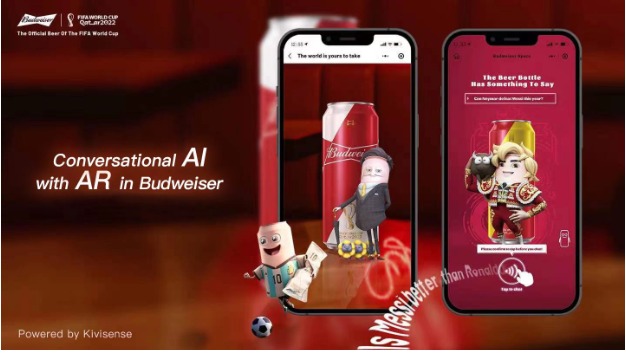
For example, Budweiser’s AR World Cup campaign was a creative response to Qatar’s beer ban during the FIFA World Cup 2022. This unique initiative turned the traditional experience of enjoying a beer into an interactive and engaging game. This helped the brand to attract fans and promote its drinks in a challenging environment.
This interactive game included eight chatty avatars that were linked to beer bottles through AR. Users could scan the bottle to bring their customized avatar to life and interact with it using conversational AI. The campaign was a big hit and helped the brand connect with fans more engagingly.
AR-driven sports sponsorships
Sports sponsorships are a great way for brands to connect with new audiences and create lasting impressions in their minds. By integrating AR into their sponsorships, brands can greatly enhance the value of their deals to engage fans and showcase their content in a unique way.
Brands can also create virtual stores where fans can purchase real or virtual goods. Moreover, in-app purchases and premium content features can further enhance the fan experience by giving them access to exclusive merchandise, behind-the-scenes content, or interactive experiences that deepen their connection with the brand.
Injury prevention and recovery monitoring
AR can also be used to prevent sports injuries and monitor recovery processes if any injury occurs. Using AR-powered wearable devices, teams can track an athlete’s biomechanics and physical condition and identify any risk of injury by analyzing movement patterns and fatigue levels. During recovery, AR can enhance the rehabilitation process by monitoring the movements.
Microsoft Hololens is a good example of how AR can be used to prevent injury and monitor recovery. This wearable device can track a player’s health dynamics and prevent potential injury risks or optimize recovery process after any injury.
Successful AR marketing campaigns at the Paris 2024 Olympics
AR lenses in the Olympics app
The official Olympics app featured more than 15 immersive AR experiences for fans during the Paris 2024 Games to enhance their excitement and double their fun. Using the app, fans could explore the history of the 1924 Olympics and activate real-time records at landmarks like the Champs Elysees and Hotel de Ville. Moreover, they could also use interactive AR lenses to engage with the Paris 2024 mascot and show support for national teams in a unique way. These engaging AR experiences made the event memorable and the games more thrilling and enjoyable than ever before.
Another unique experience lets Olympic fans recreate the iconic Paris skyline using augmented reality technology. People in cities like Los Angeles, Buenos Aires, Mumbai, or Samarkand could recreate the iconic Paris skyline in their own environment through their devices. Moreover, fans could also visualize the latest Olympic records projected in the sky above their own city. These immersive experiences allowed worldwide fans to enjoy the craze of the Olympics from their homes.
Samsung
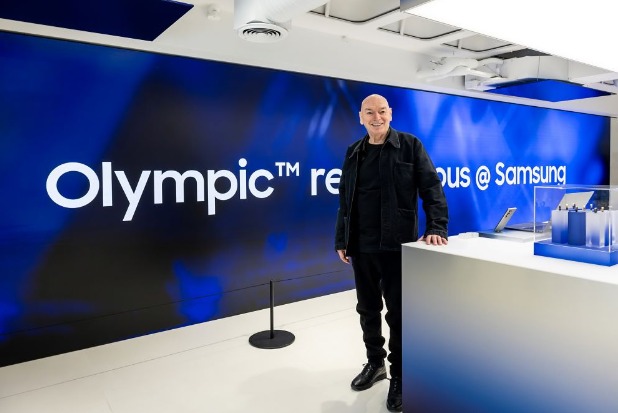
Source: samsung
During the Paris 2024 Olympics, Samsung created a big buzz with its Olympic Rendezvous @ Samsung experience. This lets visitors check out and explore the latest Samsung innovations, including AI features and exciting AR and VR experiences.
Highlights of the event include interactive mobile games like skateboarding and breakdancing which let fans interact with latest Olympic sports. Moreover, Smsung’s Galaxy Z Flip6 Olympic Edition makes the experience more fun by allowing athletes to take “Victory Selfies” from the podium and stream events live using 5G.
Toyota

Source: smartcitiesworld
Toyota took its Olympic campaign to the next level by using advanced AR and VR technologies. They offered virtual test drives and interactive experiences related to Olympic events. This helped fans feel more involved and connected to the brand. Moreover, the brand opened an Inclusive Mobility Park in Paris to showcase its innovative solutions for making transportation more accessible for everyone.
Snapchat
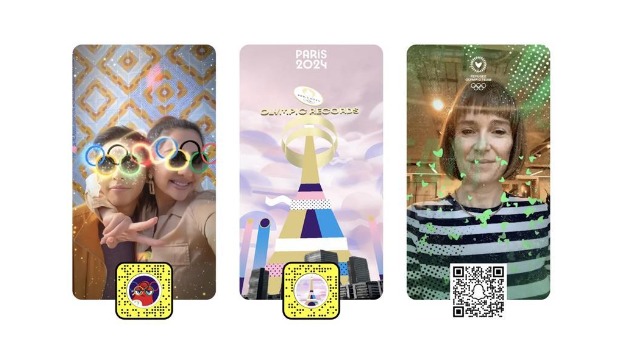
Source: broadcast
Snapchat introduced exciting AR features that let users engage with digital overlays of athletes and events during its Olympic coverage. Users can transform themselves into their favorite athletes or immerse themselves in virtual Olympic venues using its innovative AR lenses. These interactive experiences let users connect with the games in an exciting and fun way.
Coca-cola
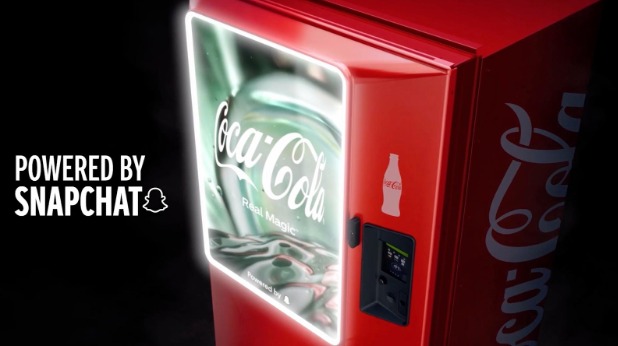
Source: lovethework
Coca-Cola unveiled the world’s first AR vending machine at the athletes’ village and during Coca-Cola’s International Food Fest. The innovative machine is driven by a custom Snapchat AR mirror and offers an engaging experience with photo opportunities, interactive games, prizes, and refreshing Coca-Cola beverages.
Future trends of AR in sports: What to expect?
AI and Data Analytics
Integration of AI-driven insights with AR will transform the entire sports experience for both fans and athletes. This will provide real time data overlays of player’s performance and health analytics so coaches can customize their training to optimize their performance. Moreover, AI insights can be used to provide personalized content depending on fan’s preferences.
AR-powered wearable technology
Athletes can use AR wearables to track their movements and get live feedback on their performance, technique, and health metrics. Devices like Hololens can monitor biomechanics and provide customized suggestions to prevent injuries and monitor recovery progress.
Smart stadiums
AR-powered smart stadiums are becoming common where AR is used to enhance the live viewing experience of fans. These stadiums offer immersive AR features like player performance stats, game replays, and game insights directly on fan’s devices. Fans can also use AR to navigate the stadium and explore its various sections virtually. This makes viewers enjoy the game as if they are physically present in the stadium.
Conclusion
As augmented and virtual technologies continue to grow, their applications in the sports sector will also expand. The innovative experiences will enhance how fans and athletes interact with physical and e-sports, whether in stadium or at home. Kivisense specializes in providing innovative AR, VR, and AI-based solutions to enhance user engagement and boost revenues.
If you are thinking of integrating AR/VR solutions into your e-commerce brand or sports initiatives, now is the perfect time to explore how these technologies can elevate your brand’s presence and customer interaction. Contact us to start the immersive journey.

